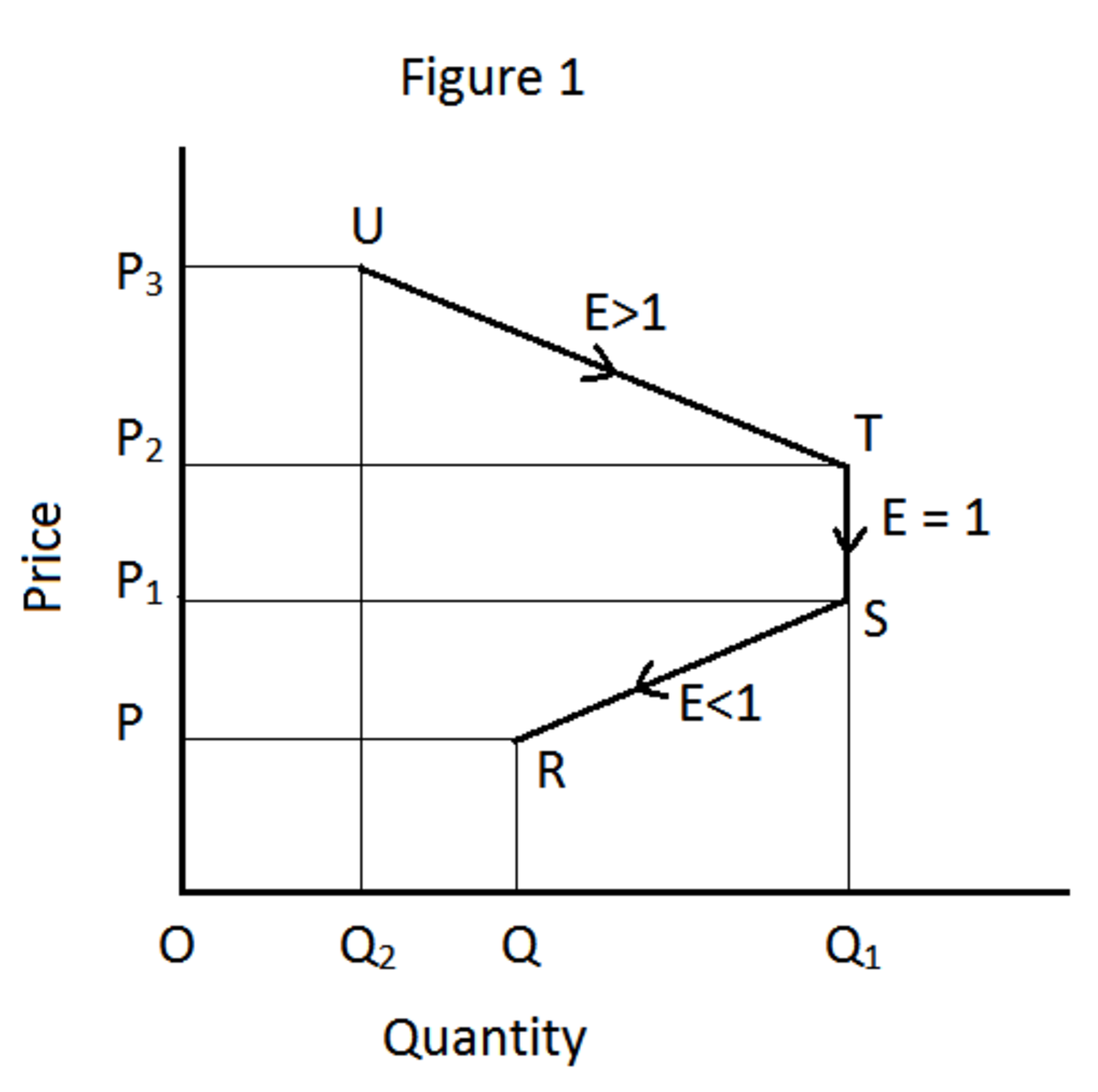The Comprehensive Overview on the Concepts, Principles and Applied Theories in Health Economics: Determinants of Health
This article provides comprehensive general information about the concepts, principles and applied theories in Health Economics. Basically, the content is the application of economics in the field of health profession. It focuses in the study of the allocation scarce resources through the operation of medical centers, hospitals and clinics. Likewise, the production of medical goods is concentrated in the operation of pharmaceutical companies, drugstores, medical equipment and supplies enterprises and other related health corporate entities. The existence of medical services relies so much in the operations of health institutions that need to understand the concept of medical price mechanisms, the return-of–investments of acquire health technologies, the user fees of medical equipment and facilities, and the evaluation of cost benefit and effectiveness in the medical programs. The understanding of these health economics concepts and theories will provide the necessary management competence of the medical personnel particularly nurses , physicians, and other allied health personnel to know the operation of the hospital or medical center in the economic enterprise of the health sector.
The first part in the Overview on the Concepts, Principles and Applied Theories in Health Economics discusses the “Determinants of Health”. It explains the definition of health in relation to the physical, mental and social well being of a person. Furthermore, it provides information about the measurement of health outcomes that includes the fertility rate, mortality rate and morbidity rate and life expectancy. These are the parameters to identify the health conditions of the people which would be used to incorporate the necessary health programs in the society. The nursing ad medical students must know these standardized measures on health outcomes to determine its effectiveness of health activities and programs that seek to improve health
A. Concepts, Principles and Determinants of Health
The concepts, principles and determinants of health revolves in the study of physical, mental and social well being of a person. There are specific measures to apply the health outcomes in relation to health and disease. The most common to determine the quality of life of individual is the life expectancy. The longer life in the absence of diseases has an indication of good health. It has a complete physical , mental and social well being to enjoy its existence and enough economic value to live in a given society. However, the presence of diseases may alter its existence and could possibly endanger the life of person. The concern of illness or disease may only be solved on proper medical care through the confinement in the hospital or clinic. The existence of illness and diseases are also measured on mortality and morbidity which is available in the health sector.
1. Physical Well-Being: It deals from the free from any kind of illness or disease as a result on the healthy condition of the body. There are two important components to understand physical well-being.
(a) Physical Fitness . There are certain physiological levels to work in the condition of the cardio-vascular systems, nervous system, pulmonary systems and other bodily systems that needs to maintain in order to become healthy. The product of regular exercise and body fitness is important to deliver a healthy lifestyle that is free from any physical health problems that may include: fatigue, stress, illness and other forms of the deteriorating conditions on its physical wellness.
(b) Nutrition. There is also a need to maintain adequate nutrition to support the nutritional needs of the body such as calcium, carbohydrates, protein, and other vitamins to maintain the body tissues.
To understand further the physical wellness read this article “Physical and Nutrition: Its Health and economic Implications to the Concept of Human Wellness” http://hubpages.com/hub/Physical-Fitness-and-Health
2. Mental Well-Being: It is the individual capacity to acquire and learn information to understand the thought and emotional processes in the interaction of the society. There are two important components in understanding the mental well being.
(a) Intelligence ( Mental Stability). This concept deals with intellectual capacity to absorb information by understanding and learning the simple to complex knowledge including abstract reasoning on the different fields of the educational endeavors of the society. The capacity to learn, acquire and understand information and knowledge provides the intellectual wellness of the person which is also called “mental stability”. The intellectual ability is categorize based on the different educational interest such in the field of arts and sciences, language and humanities, technology and electronics.
(b) Behavior (Emotional Stability). This provides information about the behavioral and emotional balance of the person to interact with the other people in the society. The usual concern in this aspect is the mental or emotional disorders which may result to social deviance in the communicating and interacting with the people. The medical and health profession supports the recovery and prevention by these mental disorders through the psychologists and physicians. They medically treat mentally disturbed patients such as depressive disorder; bipolar disorder; somatoform disorder; stress-related disorder; schizophrenia, personality disorder and other psychotic disorder.
3. Social-Well Being. It is the individual capacity to interact and make the necessary adjustments with the group of people in the society. There is always a consideration that “man is a social being”. The social ability may consider understanding and adjusting the way to deal with the opinions, beliefs, culture , norms, mores and tradition on a certain group of people in the society.
The individual must have these complete physical, mental and social well being to have healthy life. Primarily, health economics deals so much of the “physical well-being” through the physical fitness and nutrition. The improvements of the mental well-being still a part for the behavioral and intellectual life of a person; however, the mental illness may result to the psychiatric intervention and rehabilitation to live a normal life in the society. On the other hand, the social well being has more universal approach as it may understand the intellectual and behavioral capacity of the individual to adjust the common culture and tradition a given society.
So what are the important health variables to consider when to study the complete physical, mental and social well of people in a given society? These are life expectancy rates, mortality and morbidity rates and crude death rates .The study of health along the function of medical care, income, education, age, sex, race, marital status, environmental pollution, and also certain personal behavior like smoking habits, exercise, and the like. Health status is often used to explain wages, productivity, school performance, fertility and the demand for medical care.
Measurement of Health Outcomes
In health economics, there are applied measures to study the health outcome that determine the quality of life of individual. These are the criteria and parameters to monitor the effectiveness of the health programs in the society.
Notes: Measurement Derivatives on Health Outcomes
* ( /) = This symbol divides the underlined measurement variables
* (X) = This symbol multiplies at a given 1000 per population
1. Fertility Rate . This measure the numbers of live births of women have in their reproductive period. It is computed by the number of births per 1000 population ( by territorial division: town, province or state) in a given year.
CRUDE
BIRTH RATE (CBR) = Number of Births / Total Population X 1000
There are other measurements of fertility rate to understand and know the reproductive capacity at a certain age of women. The age of women provides the basic information as to the statistical level of fertility for the ages 15-49 and 20-24.
(a) The General Fertility Rate (GFR) measures the reproductive capacity of women ages 15-49 from the number of live births per 1000 in a given year.
GENERAL FERTILITY RATE. = Number of births /Number of Women Ages 15-49 X1000
(b) The Age-Specific Fertility Rate (A-SFR) measures the reproductive capacity of women ages 20-24 from the number of live births per 1000 in a given year.
AGE- SPECIFIC FERTILITY RATE=Number
of births / Number of Women Ages 20-24 X 1000
In health economics, there are specific concerns as to the increasing population of the family because of the in ability to provide the basic needs of the children. Based on researches, it was found out those poor families who are living in the farm and coastal areas have high fertility rate. There are social indications of this kind of high fertility structure created more on the problems of poverty. However, those in the middle and upper class have much lower fertility rate when compared those families whose occupation is farming or fishing. There is also high A-SFR of poor families when compared to the
2. Mortality Rate . This measure to the number of death that occur in certain population. It is computed by the number of births per 1000 population ( by territorial division: town, province or state) in a given year.
CRUDE
DEATH RATE = Number of Deaths/Total Populations X 1000
There are other measurements of mortality rate to calculate the age and disease of a given population in an area .This specific group variables such as age and disease may be studied in a certain period of time per 1000 population.
(a) The Age-Specific Death Rate (A-SDR) measures the specific death on the age group range (i..e, 50-55;60-65; or 65-70) from the total number of population in a certain period .
AGE-SPECIFIC
DEATH RATE = Deaths of People Ages 50-55 / Total Population
Ages 50-55 X 1000
The A-SDR provides information not only in the age group but also the majority years that contributed to high death rate to a certain territorial unit per 1000 population. It may also consider the possible life expectancy on the age group range to determine the health of the people. The life expectancy is measured in the average number of additional years from the expect life in a given age-specific death rate for a given year. This may vary on the certain degree of the physical, mental and social well –being of the person.
(b) The Cause-Specific Death Rate (C-SDR) measures the specific death incidence on particular illness such as cancer, TB, influenza, and etc. from the total number of population in a certain period .
CAUSE-SPECIFIC
DEATH RATE = Death from Tuberculosis /Total Deaths X 1000
(c) The Infant Mortality Rate measures the death of the infants in a certain period of time per 1000 population.
INFANT MORTALITY
RATE= Total Number of Livebirths /Total Population of Infants X 1000
3. The Morbidity Rate measures to the frequency of disease, illness, injuries and disabilities that occur in certain population. It is computed by the number of cases per 1000 population ( by territorial division: town, province or state) in a given year.
(a) The Incidence Rate measures the number of persons developing the illness or disease within a given period of time. The morbidity rate provides health information about the disease or illness contracted within a given period.
INCIDENCE RATE= Number of persons developing illness or disease within a given period / Population at Risk X 1000
In health economics, the incidence rate may identify the possible health programs based on the high occurrence on certain illness such as cancer, hypertension, dengue, TB and others. The financial inflows of health relate projects are measured on it cost and benefits particularly in reducing the incidence rate of particular illness.
(a) The Prevalence Rate measures the number of persons with age groups range on particular disease or illness. The morbidity rate provides health information about whom the age group range may address the particular disease or illness contracted within a given period.
PREVALENCE RATE= Number of person ages 20-50 with Cancer / Total
Population Ages 20-50 X 1000
The nursing and medical students must know these standardized measures on health outcomes to determine its effectiveness of health activities and programs that seek to improve health. The health information and data as identified in fertility rate, mortality rate, life expectancy rate and morbidity rate are the health variables to identify the health priority programs of the national government . So the applied theories in health economics may mean so much about the improvement of quality of life in the society.
In fertility rate, it provides important information to handle the growing population of certain territorial areas. The health services usually focus on the reduction of population to maintain manageable clients. The family planning program and the reproductive health programs are implemented particularly in the poor families as they are affected by this concern of large family size that cannot easily support the basic needs of the family.
On the other hand, the mortality rate is the extreme part of understanding the death of the people along age range, illness and disease including other related variables to shorten the life of the people. In the case of the morbidity rate explores the possibilities to prevent and cure the emerging disease and illness that may affect the population.
Furthermore, the World Health Organization provides long term objectives as to the concept for “health for all”. These are healthy living by a population educated in health problems and the appropriate responses ;a healthy environment providing shelter, food, water and sanitation, with good economic opportunities and freedom from the fear of violence; and an accessible, rational and comprehensive system of preventive treatment, care and rehabilitation services.
In the healthy environment, we usually addressed the concern on water and sanitation by responding a project on clean water potable to reduce the health problems on the skin diseases, typhoid fever and other illness. The health programs on the environment and sanitation provide the prevention on the possible prevalence or occurrence of diseases or illness such as dengue, flu, typhoid fever and etc.These health programs have the possibility of reducing health problems including the health outcome on morbidity and mortality rate.
The achievement of these long-term objectives may need substantial amount of financial resources of a country to address the concern of the poor people of the society. It is always an economic issue wherein people need money to buy medicines, to pay the medical check up fees, to pay the medical expenses in the confinement of the hospital and other related medical expenses to ensure a good health of a person.
The health services of the national government have always addressed this issue about the pro-poor programs. The Less Developed Countries (LDC) cannot easily implement the comprehensive health care for the poor because of the huge investment in purchasing the needed medical facilities and equipment in the public hospital.
The poor people want to be confined in the private hospitals because of the quality health care they are giving to the patient. The problem of the poor is “they don’t have money to pay their medical expenses.” In the hubPages, somebody asked a question about “ How to solve the problem of poverty? The social equity model is directed to find for the employment and income of the poor people in the rural areas. This is a solution to solve the problem of poverty. Once people have money they could be confined in the private hospital as they have money to pay for their medical bills.
Find out the answer on the articles about “Social Equity Model for Income and Employment.”
The understanding of the concepts, principles and determinants of health will health us understand the connection to economics particularly when we are dealing with the health care intervention to treat whatever illnesses or diseases may need money as form of exchange on the services rendered in the consultation, medication and confinement in the clinic or hospital. This comes now the concepts, and principles of economics which later on extensively discuss in an integration of health and economics which is now called Health Economics
This is the "Part II: Determinants of Health" on the article " Overview on the Concepts, Principles and Applied Theories of Health Economics". More articles will follow within the subject of Health Economics.








